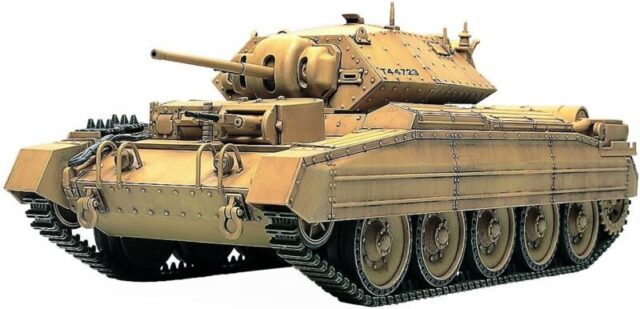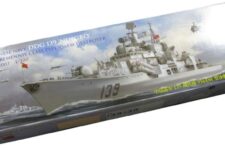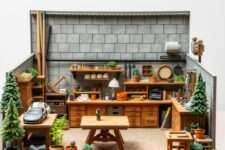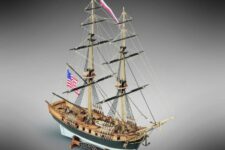
Table of Contents
If you have an interest in military history and enjoy getting hands-on with projects, building a model tank kit can be a fulfilling and captivating hobby. It not only allows you to recreate historical vehicles with intricate detail but also provides an opportunity to showcase your creativity and craftsmanship. In this comprehensive guide, we will take you through the step-by-step process of constructing a scale plastic model tank kit, offering useful tips and techniques to help you achieve impressive results.
The Building of A Model Tank Kit
Step 1: Gather the Necessary Materials and Tools
Before delving into the project, it is crucial to gather all the materials and tools required. Here is a list of the items you will need:
1. Model kit: Select a suitable scale model tank kit that matches your interests and skill level. In this guide, we will be using the Tamiya 1/35 US M5A1 Light Tank kit.
2. Glue: Obtain an appropriate glue specifically designed for plastic model assembly. Tamiya Extra Thin Cement is highly recommended for its strong adhesive properties.
3. Cutting tools: Invest in a high-quality pair of side cutters and an X-Acto knife to remove parts from the sprues and tidy up any excess plastic.
4. Sandpaper: Prepare sandpaper with various grits, ranging from 150 to 10,000, to smooth and refine the model’s surfaces.
5. Putty: Acquire a filler putty, such as Tamiya fine white putty or Milliput epoxy, to fill in any gaps and seams, ensuring a seamless appearance.
6. Paint: Choose paints specifically designed for models, including a primer, base coat, and colors for detailing and weathering.
7. Brushes: Obtain a selection of paint brushes suitable for applying different paint layers and weathering techniques.
8. Masking tape: Use masking tape, preferably Tamiya masking tape for its narrower widths, to protect specific areas during the painting process.
9. Decals: Depending on the model tank, you may have decals for adding authentic markings and insignia.
10. Weathering materials: Oil paints, dry brushes, and rags will be useful for achieving realistic weathering effects.
Study The Instruction Sheet On The Assembly First
Step 2: Familiarize Yourself with the Model Tank Kit
Before starting the construction process, take some time to familiarize yourself with the contents of the model tank kit. Open the box and examine the sprues, instructions, painting guidelines, and provided decals. The instructions will guide you through the assembly process, indicating the correct order of parts and any specific considerations.
Step 3: Prepare the Parts
To ensure optimal paint adhesion and remove any residual grease, it is recommended to clean the parts before assembly. Gently wash the sprues and parts using a mild soap and water solution. This step will help prevent any paint issues later on.
Step 4: Remove Parts from the Sprues
Carefully detach the parts from the sprues using side cutters or nail clippers. Avoid twisting the parts to prevent creating unsightly holes. Instead, make clean cuts near the attachment points.
Step 5: Clean Excess Plastic
After removing the parts from the sprues, use an X-Acto knife to scrape off any excess plastic. Take your time to ensure a clean and smooth surface. Follow up with sandpaper of the appropriate grit to further refine the edges.
Step 6: Assemble the Parts
Now comes the exciting part – assembling the tank! Apply a small amount of Tamiya Extra Thin Cement to both parts that need to be joined. This acetone-based cement melts the top layer of plastic, creating a strong bond. Ensure proper alignment of the parts and press them firmly together. Allow the adhesive to dry completely before proceeding to the next step.
Step 7: Fill Gaps and Seams
After assembling the parts, you may notice small gaps and seams. To achieve a seamless appearance, apply putty to these areas. Use Tamiya fine white putty for smaller gaps and Milliput epoxy for larger ones. Press the putty into the gaps, let it dry, and then sand it down to create a smooth surface.
Step 8: Prepare for Painting
Before applying paint, it is crucial to prime the model. Choose a primer specifically designed for models, like Tamiya primer, which contains fine particles. Gently swirl the can instead of shaking it to avoid creating bubbles. Apply thin layers of primer to the model, allowing each layer to dry completely before applying the next one. Aim for a flat, dull finish to ensure optimal adhesion of subsequent paint layers.
Step 9: Apply the Base Coat
With the primer in place, it is time to apply the base coat. If you are using brushes for painting, skip to the next step. For those using spray cans or airbrushes, select a base coat color that is darker than the desired final color. Apply thin layers of the base coat, allowing each layer to dry before applying the next one. Leave certain areas unpainted to create realistic shadows on the model.
Step 10: Paint the Model
Now comes the exciting part of bringing your tank to life with paint. Using your chosen colors and techniques, carefully apply thin layers of paint to achieve the desired effect. Take your time and pay attention to the details. Remember to allow each layer to dry completely before applying subsequent layers or moving on to the next color.
Step 11
Involves applying decals to your model to enhance its authenticity and detail. Follow the instructions provided for cutting out the desired decal and activating the adhesive by briefly dipping it in water. Use tweezers to carefully place the decal on the model and then gently roll over it with a cue tip to remove any air bubbles and achieve a smooth finish. Allow the decals to dry completely.
In Step 12
You can employ various weathering techniques to give your model a realistic and worn appearance. Utilize oil paints, dry brushes, and rags to add shadows, dirt, and wear to specific areas. It’s important to experiment with different techniques while exercising restraint and gradually building up the weathering for a more natural effect.
Once you are satisfied with the painting and weathering in Step 13, it’s time for the finishing touches. Take a step back and carefully examine your model, making any necessary adjustments or additional enhancements to ensure a well-detailed and overall pleasing appearance.
If you desire to elevate your model to the next level, consider creating a diorama in Step 14. This adds context and visual interest to your model, allowing you to tell a captivating story. Conduct research and plan the setting, gather materials such as terrain, foliage, and small-scale accessories, and thoughtfully arrange them to construct a realistic scene. Let your imagination guide you in creating a compelling diorama.
In conclusion, building a scale plastic model tank is an engaging and enjoyable hobby that enables you to delve into military history and showcase your modeling skills. By following this step-by-step guide, you will be able to create a detailed and lifelike model that you can proudly display. Remember to exercise patience, attention to detail, and creativity throughout the process. Enjoy the art of modeling!




